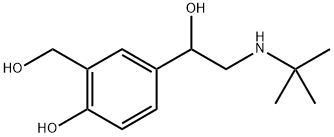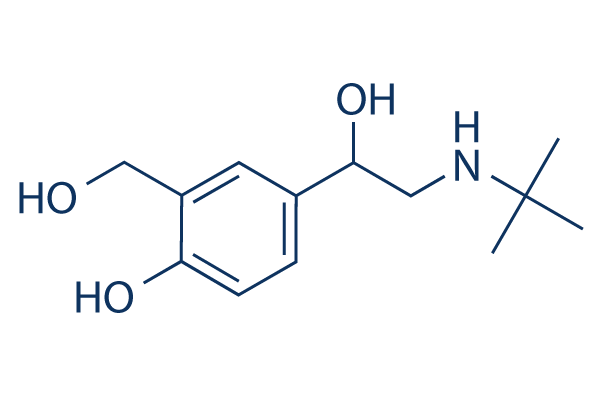Side effects of Albuterol
Albuterol is a short-acting b2-adrenergic agonist that is
primarily used as a bronchodilator for the treatment of asthma
or other pulmonary diseases. It is prepared as a racemic mixture
of R(-) and S(+) stereoisomers. The stereospecific preparation
of R(-) isomer of albuterol is referred to as levalbuterol.
Albuterol may be used for the treatment of hyperkalemia and is
found in metered dose inhalers, unit doses for nebulizers, and
as an oral syrup and tablets.

Uses
Albuterol is used as a bronchodilator in the treatment of asthma
or other pulmonary diseases. Off-label uses include treatment of
hyperkalemia and in the prevention of premature labor.
Mechanism of action
The oral adult dose is 2–4 mg three to four times a day. Oral
doses for children are 0.1–0.2 mg kg-1. The inhalational dose
is typically 0.1–0.15 mg kg-1 per dose or 0.5 mg kg-1 h-1 for
continuous administration.
β-Adrenergic receptors mediate the effects of the sympathetic nervous system throughout the body. β2 Receptors are found on vascular, bronchial, gastrointestinal, and uterine smooth muscle as well as skeletal muscle, hepatocytes, and also the myocardium. Albuterol stimulates adenyl cyclase which catalyzes cyclic adenosine monophosphate (AMP) from adenosine triphosphate (ATP). This mediates bronchodilation and smooth muscle relaxation through activation of protein kinases, leading to phosphorylation of proteins, which in turn increases bound intracellular calcium. The reduced availability of intracellular ionized calcium inhibits actin–myosin linkage, leading to the relaxation of smooth muscle. b2-Adrenergic receptors in the lung also inhibit secretions and decrease histamine release. Stimulation of b2-adrenergic receptors found on the uterine smooth muscle inhibits the onset of labor.
Side effects
Albuterol is a selective b2-adrenergic agonist that primarily causes smooth muscle relaxation. With therapeutic use, adverse effects with albuterol therapy include tachycardia, tremor, hyperactivity, nausea, and vomiting.
Toxicity may result from overstimulation of b-adrenergic activity. In addition, b-adrenergic selectivity is lost, so β-1 effects can be seen. With mild-to-moderate toxicity poisoning/ exposure, tachycardia, hypertension, tachypnea, tremor, agitation, nausea, vomiting, hypokalemia, and hyperglycemia may occur. Severe effects include hypotension, dysrhythmias, seizures, and acidosis and are likely to occur only after ingestion.
You may like
Related articles And Qustion
Lastest Price from Salbutamol manufacturers

US $10.00/box2025-07-31
- CAS:
- 18559-94-9
- Min. Order:
- 1box
- Purity:
- 99.99%
- Supply Ability:
- 9999

US $30.00-10.00/g2025-04-21
- CAS:
- 18559-94-9
- Min. Order:
- 100g
- Purity:
- 99%
- Supply Ability:
- 1000kg


